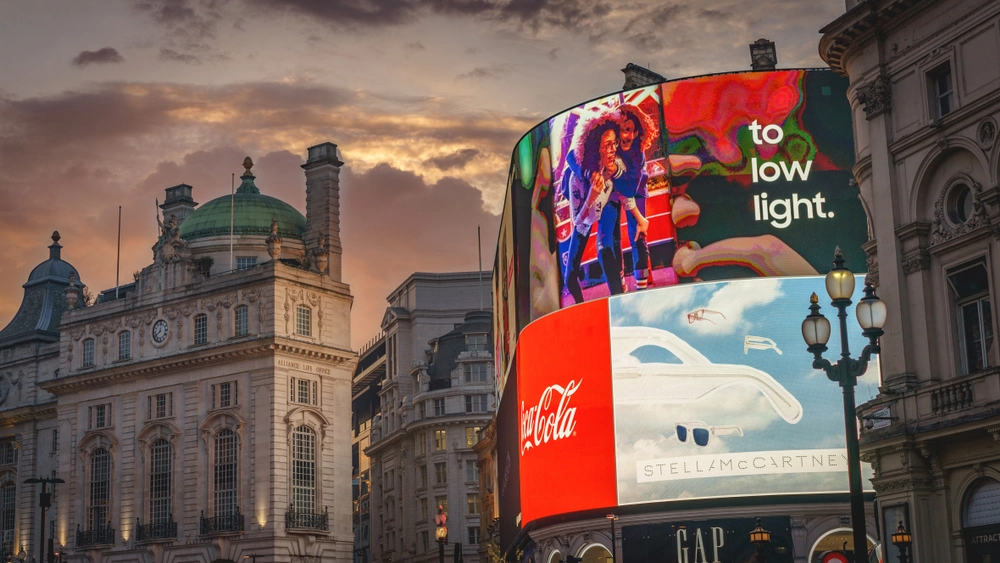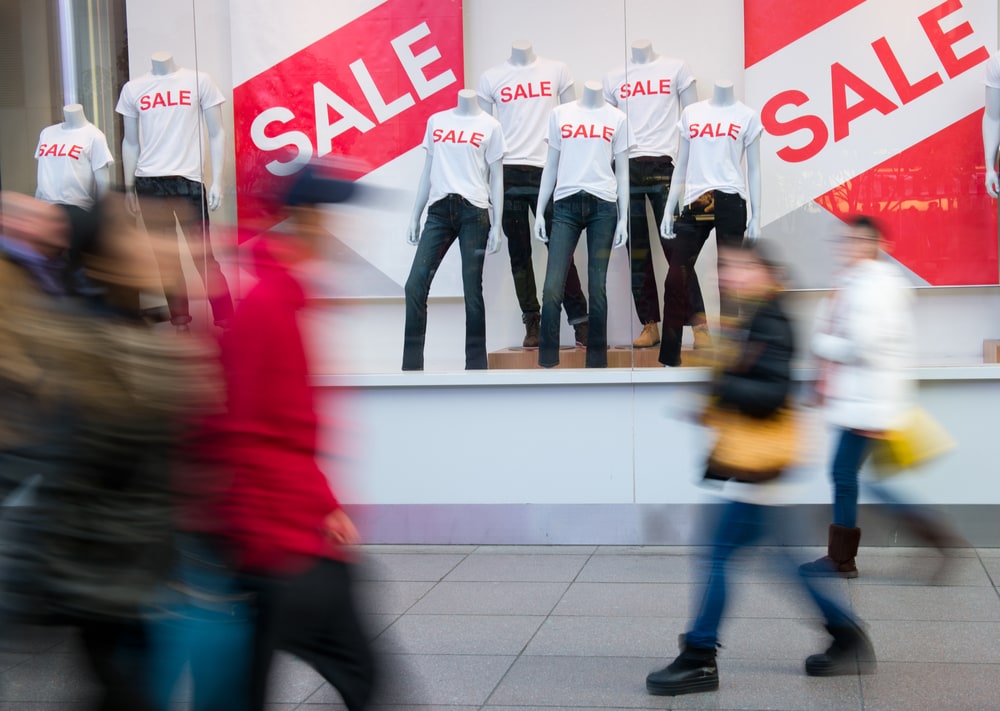
Retail reality check: why LGBTQ+ workers are still unsafe at work


In recent years, retail workers across the UK have increasingly been spotlighted for facing unacceptable levels of harassment, including abusive language, physical aggression, offensive remarks and even unwanted sexual contact. Our 2025 Harassment in Retail Report shows 27% of retail workers say they have experienced physically aggressive or violent behaviour in their current jobs, an increase of 2% since 2019. However, whilst the recent report highlights some "green shoots" of improvement from previous years (with fewer reports of both unwanted touching and abusive or offensive language from customers), the report makes for uncomfortable reading for LGBTQ+ retail workers who consistently report higher levels of harassment in the retail workplace.
For example:
- More than half (58%) of gay and lesbian respondents reported hearing extremely offensive language (including homophobic abuse) at work, compared to 36% of all retail respondents.
- Gay and lesbian respondents were also more than twice as likely as their heterosexual counterparts to experience unwanted sexual contact at work.
- As regards physically aggressive or violent behaviour, gay, lesbian and bisexual staff members report significantly more exposure (37% and 33% respectively, compared to the average 27%).
This staggering difference stands as a reminder to the industry that experiences of unacceptable behaviour are not uniform across all demographics, and harassment in retail is not merely about customer frustration or isolated incidents; it reflects broader societal prejudices and systemic failings within workplace cultures.
Persistent abuse in retail workplaces: the evolving landscape
Our report shows that homophobia remains part of the abuse spectrum for retail workers and often includes offensive or hate-laced language. This can contribute to stigma and worsen mental health impacts for LGBTQ+ staff. Research by the Retail Trust identified LGBTQ+ workers as consistently feeling less valued, less fulfilled and less safe at work when compared with heterosexual or non-LGBTQ+ staff.
In recent years, issues of sexuality and gender identity have attracted considerable mainstream media and public attention, propelling a number of legal judgments (such as Higgs v Farmor’s School and For Women Scotland v Scottish Ministers) into public consciousness. With public discourse intensifying and expanding, workers, customers and colleagues are more exposed than ever to diverse and increasingly polarised views on sexuality and gender. While many views and beliefs in this context operate within the boundaries of the relevant law, retail workers are nevertheless at a higher risk of experiencing abusive language and behaviour in their workplace.
Even where employers have policies in place to deal with such issues, some workers may feel their concerns are dismissed or not taken seriously, and there is often a perception that reporting concerns can carry risk (whether socially, professionally and/or from a safety perspective). Whilst our latest report identifies a significant reduction in the percentage of retail staff who have raised a grievance (9% in 2025, down from 20% in 2021), the question remains as to whether this reflects an actual reduction in issues or rather an increase in the acceptance or normalisation of such treatment.
The retail environment: the intersection of customer bias and workplace dynamics
The issue of harassment in the workplace is not unique to the retail sector, however the nature of retail – often with its "customer-first" mentality – can create significantly enhanced risks. Retail staff, by the nature of their roles, engage in high volumes of public interaction and are frequently required to enforce store policies (for example, returns or pricing) which can trigger aggression. For LGBTQ+ workers, this visibility can exacerbate vulnerability:
- Visibility of identity: employees who are openly LGBTQ+ or who present in ways that defy traditional gender norms can become targets for harassment, both overt (e.g. verbal slurs) and covert (e.g. microaggressions or exclusion).
- Customer bias and societal prejudice: the retail environment can amplify societal biases. Customers bringing homophobic or transphobic attitudes into stores contribute to a hostile atmosphere, which can be compounded by the emotional labour required of retail staff who must maintain professionalism in the face of abuse.
- Internal workplace dynamics: harassment is not confined to customer interactions. Of the 58% of gay and lesbian workers who confirmed they had experienced extremely offensive language at work, 39% confirmed that such abuse was from their colleagues. Protecting teammates from abuse from customers does not necessarily protect them from abuse perpetrated by colleagues, which can be particularly harmful as it undermines the implicit trust needed between colleagues in the workplace.
The cost of harassment: individual and organisational
Harassment isn’t just a moral or legal failing; it has tangible costs. The impact of harassment on workers’ mental health is widespread, however it is particularly acute for those in the LGBTQ+ community, with 65% of those identifying as bisexual stating that they felt stressed by such behaviour, compared to 41% of heterosexuals. The differential is similar for those experiencing anxiety (specifically, 38% of heterosexual workers reported anxiety compared to 48% of gay and lesbian workers) and depression (with 17% of heterosexual workers on average reporting depression compared to 22% of gay and lesbian workers and 25% of bisexual workers).
Feeling unsafe or disrespected at work often leads to both absenteeism and retention difficulties. Further, news of harassment – especially homophobic or discriminatory abuse – can harm a retailer’s brand both from a recruitment and consumer perspective.
What can retailers do?
The Equality Act 2010 provides legal protections to the LGBTQ+ community from discrimination based on sexual orientation and gender reassignment. Further, since 26 October 2024, employers are under a positive duty to take proactive reasonable steps to prevent the sexual harassment of their employees in the course of their employment. The Employment Rights Bill is also proposing to enhance this protection, requiring employers to take 'all' reasonable steps to prevent all forms of harassment and to reintroduce employer liability for third-party harassment. However, legal protections are only as effective as the workplace cultures that support them. Employers should therefore be considering the steps they can take to support their staff against harassment, including:
- Review, strengthen and enforce anti-discrimination and harassment policies
- Employers should ensure that such policies explicitly address homophobia, transphobia, unwanted sexual behaviour and harassment by both customers and colleagues.
- Ensure reporting mechanisms are safe and confidential, with express protections against retaliation.
- Ensure investigations into such issues are taken seriously and promptly.
- Training for all levels, especially frontline managers
- Equip managers to recognise harassment (including subtle or unintentional), respond to it and support those affected.
- Introduce gender diversity training to build manager and employee confidence to speak about gender diversity and manage a diverse workforce.
- Conduct regular scenario-based learning for frontline staff and managers dealing with customer abuse as well as colleague harassment.
- Introduce training for managers and employees on managing conflicting beliefs to reduce the risk of inadvertent discrimination on the grounds of protected belief – recent case law shows that this is a particular risk area for employers, even where they are well-intentioned.
- Support systems for victims
- Ensure support systems are in place for employees (including, for example, EAP and mental health support) and clear, widely understood pathways for reporting issues.
- Consider establishing peer or manager support groups that can provide safe spaces for LGBTQ+ workers to express their identity, share experiences and provide support.
- Publicise in-store that harassment of colleagues by customers will not be tolerated and train managers to effectively intervene and de-escalate customer situations, without devaluing the impact of any abuse on colleagues.
- Representation and visibility
- Introduce visible, trusted LGBTQ+ inclusion leads or champions within the workforce.
- Strive for and support LGBTQ+ diversity in leadership.
- Monitoring and transparency
- The collection and assessment of data (which can be anonymous) on harassment incidents by demographic group can help to identify trends early and enable effective steps to be taken to address issues.
- The collection and assessment of data (which can be anonymous) on harassment incidents by demographic group can help to identify trends early and enable effective steps to be taken to address issues.
- Cultural change
- Challenge toxic "banter" and normalise respect as opposed to abuse – ensuring a top-down approach with well-communicated and enforced expectations from customers.
Further support
Foot Anstey has partnered with the Retail Trust to create the Retailers Against Harassment Certification – an initiative to support retailers in their efforts to combat the rise in harassment in the retail workplace and foster safer working environments for their employees. If you would be interested in discussing the certification in more detail, please do not hesitate to contact us.
Foot Anstey offers a range of training modules that can assist in dealing with harassment in the workplace and driving cultural change as regards LGBTQ+ issues, including both Gender Diversity in the Workplace and Dealing with Conflicting Beliefs in the Modern Workplace. For further details, please get in touch.
Conclusion
Whilst our latest report evidences progress in reducing certain aspects of harassment in the retail sector, LGBTQ+ workers remain disproportionately harmed by violence, unwanted physical contact and discriminatory language.
This isn’t just a “customer issue” or a “co-worker issue” in isolation – it’s a sector-wide cultural challenge. Campaigns like the Retail Trust’s #RespectRetail are starting to push against the idea that abuse from customers is "just part of the job", but cultural change can be slow; employers need to be proactive and demonstrate that their actions, both in support of diversity and against harassment, are more than a simple box-ticking exercise.













